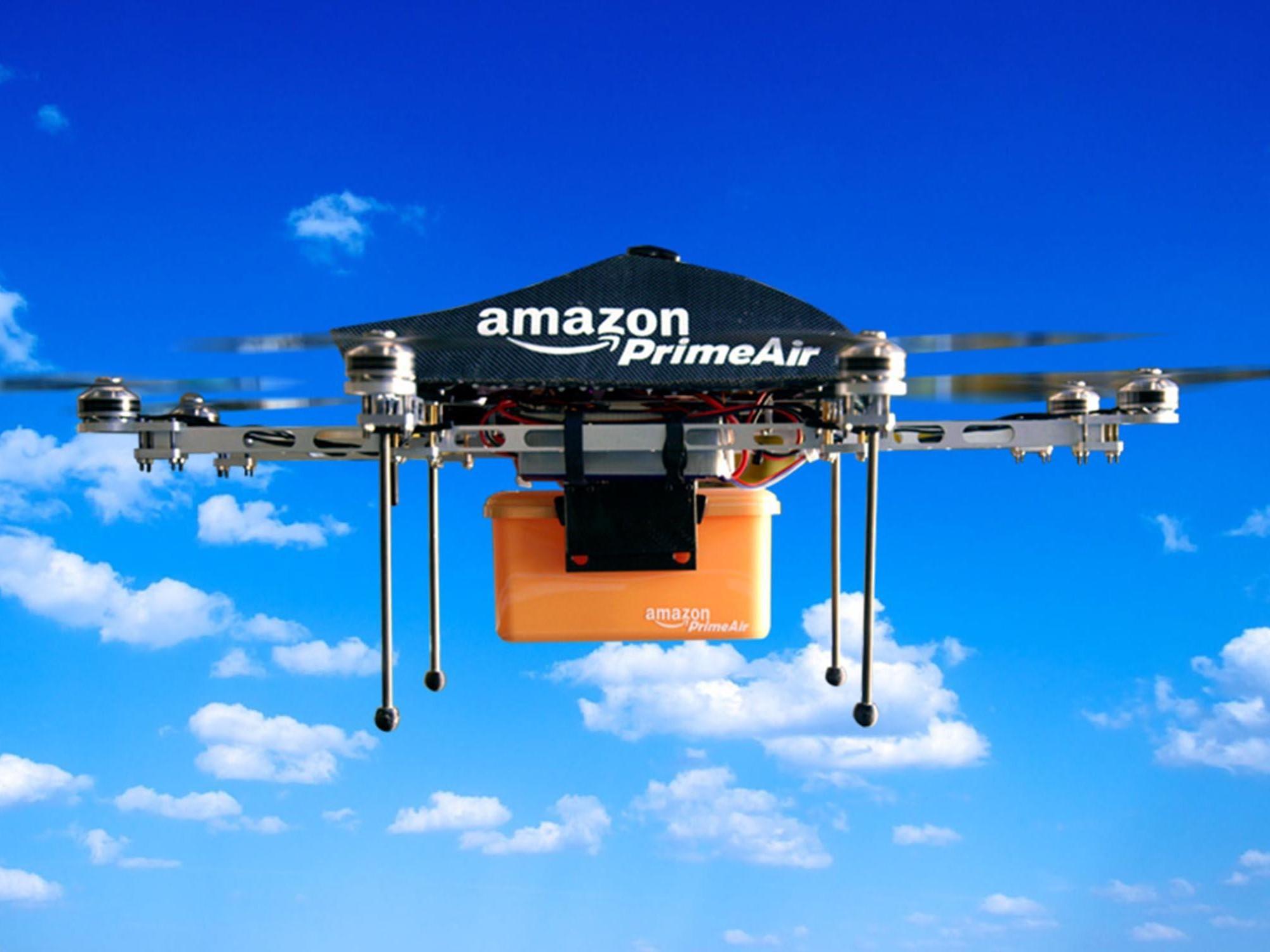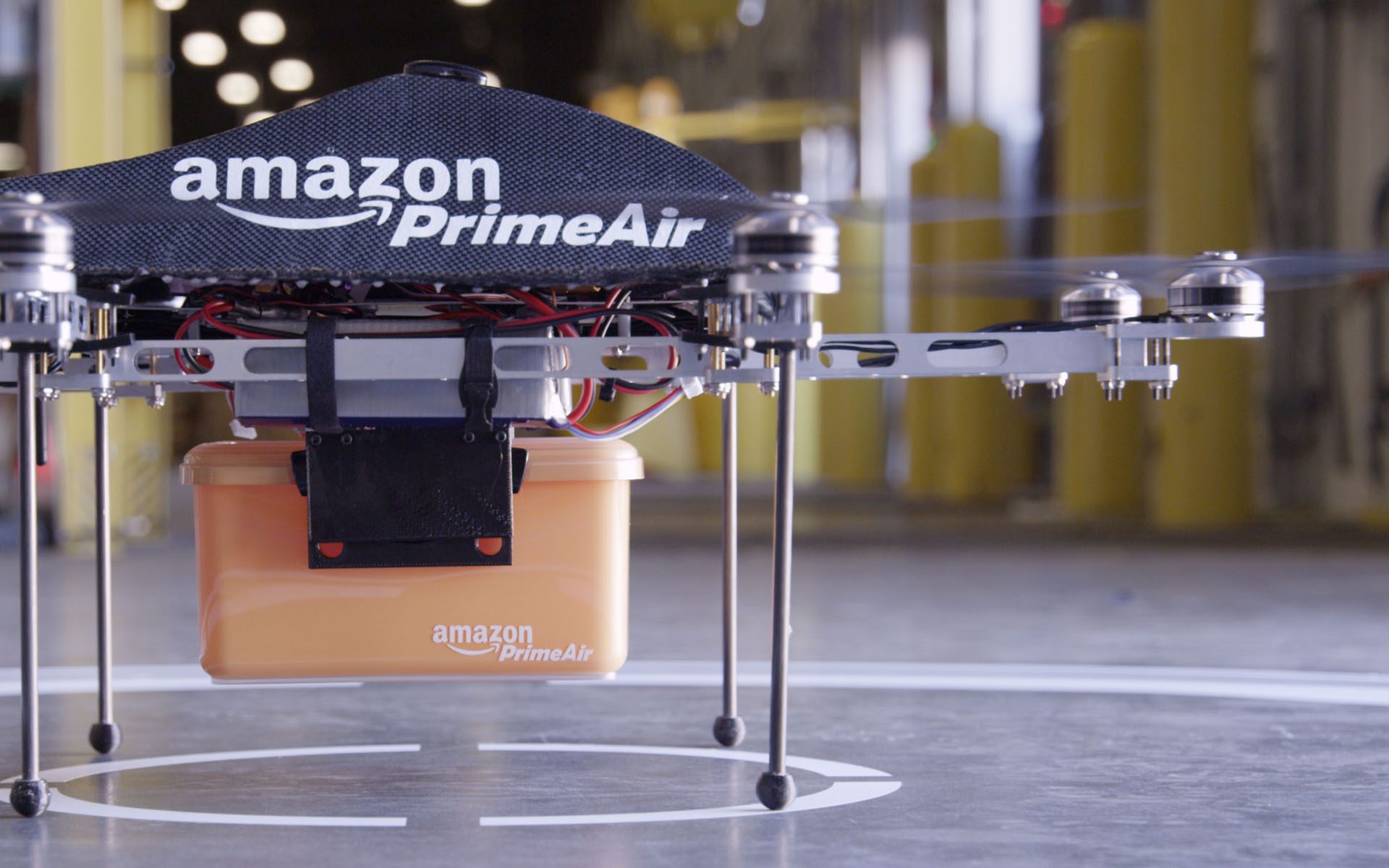Amazon drone delivery locations are rapidly expanding, revolutionizing how we receive packages. This isn’t just about faster shipping; it’s about reimagining logistics, impacting communities, and pushing the boundaries of technology. We’ll explore the current state of Amazon’s drone delivery program, examining location selection criteria, technological aspects, economic impacts, and future challenges.
From understanding the infrastructure needs of these locations – think landing zones and communication systems – to analyzing the social and environmental consequences, we’ll paint a comprehensive picture. We’ll also delve into the exciting technological advancements driving this transformation and the potential hurdles ahead.
Amazon Drone Delivery Program: A Deep Dive: Amazon Drone Delivery Locations

Amazon’s drone delivery program represents a significant leap in logistics and last-mile delivery. This article explores the current state of the program, the factors influencing location selection, technological aspects, economic and social impacts, and future expansion plans.
Current Amazon Drone Delivery Program Status
Amazon’s drone delivery service, officially known as Amazon Prime Air, is currently operational in select locations across the United States. The program’s geographical reach is limited, focusing on relatively small, suburban or rural areas. This is due to various factors, including airspace regulations and infrastructure limitations.
Currently, eligible packages are typically smaller, lighter items that can be safely and efficiently transported by drone. These often include everyday household items, certain types of electronics, and other goods that fit within the drone’s weight and size constraints. The selection of eligible items is constantly evolving as the technology improves.
Amazon’s drone delivery locations require specific infrastructure. This includes designated airspace where drone flights are permitted, complying with Federal Aviation Administration (FAA) regulations. Safe and secure landing zones are also essential, often designed to minimize the risk of collisions or other hazards. These zones need to be easily accessible for drone landing and retrieval, but also protected from unauthorized access.
Compared to other drone delivery initiatives, Amazon Prime Air boasts a relatively advanced level of automation and integration with Amazon’s broader logistics network. However, other companies like Wing (Alphabet’s drone delivery service) and Zipline have established operations in different regions and contexts, demonstrating various approaches to drone delivery implementation.
Factors Influencing Location Selection
Amazon’s selection of drone delivery locations involves a multifaceted assessment of various criteria. Population density plays a crucial role; densely populated urban areas present significant challenges related to airspace management and safety, while sparsely populated rural areas might lack the customer base to justify the operational costs.
Existing infrastructure is another key consideration. Areas with well-established road networks facilitate the transportation of drones and packages, while proximity to airports or other air traffic hubs could influence airspace restrictions. The availability of suitable landing zones within the operational area also needs to be considered.
Establishing drone delivery locations in urban areas presents significantly more challenges than in rural areas. Urban environments are characterized by complex airspace, numerous obstacles, and higher population density, increasing the risk of accidents. Rural areas often offer more open airspace and fewer obstacles but may lack the population density needed to sustain the service economically.
Technological Aspects of Drone Delivery Locations, Amazon drone delivery locations

A hypothetical Amazon drone delivery hub needs a well-planned layout for efficient operations and safety. This layout should incorporate several key components.
| Component | Quantity | Specifications | Location within Hub |
|---|---|---|---|
| Landing Pads | 6-10 | Weather-resistant, GPS-enabled, with integrated safety features | Centralized area with easy access for drone retrieval |
| Charging Stations | 10-15 | Fast-charging capabilities, integrated monitoring system | Dedicated area near landing pads |
| Security System | Comprehensive | Perimeter fencing, surveillance cameras, access control | Entire hub perimeter and interior |
| Package Sorting Area | 1 | Conveyor belts, automated sorting system | Adjacent to charging and landing area |
Reliable communication systems are crucial for safe and efficient drone operations. This includes GPS, cellular networks, and dedicated drone communication networks to ensure real-time tracking, command and control, and communication between drones and the hub.
Robust safety protocols and emergency procedures are implemented to minimize risks. These include regular drone maintenance, pilot training, and emergency response plans for situations such as drone malfunctions or unexpected weather conditions. Fail-safe mechanisms are incorporated into the drone design and operational procedures.
Operating drone delivery locations in various climates presents technological challenges. Extreme temperatures, heavy rainfall, snow, and strong winds can impact drone performance and safety. Technological solutions include weather-resistant drones, advanced sensor systems, and intelligent flight control algorithms to mitigate these challenges.
So, Amazon’s expanding its drone delivery locations, aiming for wider coverage. It makes you think about the tech involved, though – check out this article about a drone show crash to see how things can go wrong. Understanding these potential issues is key to improving the safety and reliability of Amazon’s drone delivery network, ensuring packages arrive safely and efficiently to those locations.
Economic and Social Impacts of Drone Delivery Locations
The establishment of Amazon drone delivery locations can bring several economic benefits to communities. These include increased employment opportunities, both directly in drone operations and indirectly in supporting industries. Local businesses might also see increased sales as access to wider markets becomes available.
So you’re curious about Amazon drone delivery locations? It’s pretty cool how they’re expanding, right? Think about the scale – it’s almost as impressive as seeing a massive drone show like the one at Niagara Falls, check it out: niagara falls drone show. That kind of coordinated flight control is similar to what’s needed for efficient Amazon drone delivery, just on a much larger, more spectacular scale.
The potential for job creation associated with Amazon drone delivery locations is significant. This includes roles in drone maintenance, pilot operations, logistics, and support services. These jobs can contribute to local economies and reduce unemployment rates.
The environmental impact of drone delivery needs careful consideration. While drones offer the potential for reduced fuel consumption compared to traditional delivery methods, noise pollution is a potential concern. Minimizing noise pollution through drone design and operational strategies is crucial to mitigate negative environmental effects.
- Potential Social Benefits: Increased convenience for consumers, faster delivery times, reduced traffic congestion, improved access to goods in remote areas.
- Potential Social Drawbacks: Job displacement in traditional delivery sectors, privacy concerns related to drone surveillance, potential noise pollution impacting communities.
Future Expansion and Challenges
Amazon’s drone delivery network is expected to expand significantly in the coming years, both geographically and in terms of the number of operational locations. The company’s long-term vision likely includes wider coverage across the US, potentially expanding into other countries as regulations and infrastructure develop.
A plausible timeline for growth might involve a gradual increase in operational locations over the next 5-10 years, with a substantial expansion in the latter half of this period. This growth will depend on factors like regulatory approvals, technological advancements, and consumer demand.
Regulatory hurdles, such as airspace regulations and safety certifications, could significantly impact the pace of expansion. Ensuring compliance with evolving safety standards and obtaining necessary permits will be crucial for continued growth. Integration with existing air traffic management systems will also be a significant challenge.
Advancements in drone technology, such as improved battery life, autonomous navigation capabilities, and increased payload capacity, could enable the selection of more diverse drone delivery locations. More robust drones capable of operating in challenging weather conditions will expand operational areas.
Visual Representation of a Drone Delivery Location
Imagine a small, fenced-in area, perhaps the size of a modest warehouse, situated in a suburban or rural setting. Within this area, several designated landing pads are clearly marked, each equipped with sensors and lighting for safe nighttime operations. Drones, sleek and efficient, arrive silently, descending to their assigned pads. A small team of technicians monitors the operation from a nearby control room, overseeing the landing, package retrieval, and drone charging.
The packages themselves are quickly sorted and loaded onto waiting delivery vehicles for the final leg of their journey to customers’ doorsteps. The entire operation is meticulously planned and executed, a testament to the efficiency and precision of modern drone technology. The overall scene is one of controlled activity, ensuring both safety and efficiency in the delivery process.
Final Review

Amazon’s drone delivery program is more than just a futuristic concept; it’s a rapidly evolving reality reshaping delivery logistics. While challenges remain, the potential benefits – from economic growth to environmental improvements – are significant. As technology advances and regulations adapt, we can expect to see an even wider rollout of drone delivery, bringing faster, more efficient, and potentially more sustainable package delivery to communities across the globe.
Answers to Common Questions
How much does Amazon charge for drone delivery?
Currently, Amazon drone delivery is offered as a free service for eligible items and locations. Pricing may change in the future.
So you’re curious about where Amazon’s drone deliveries are headed? They’re expanding rapidly, testing various locations for optimal efficiency. To get a sense of the scale and potential of drone technology, check out this amazing florida drone show showcasing the latest advancements. Seeing those coordinated aerial displays really helps you grasp the future of drone logistics, including Amazon’s ambitious delivery plans and how they’re carefully selecting their drone delivery locations.
What types of packages can be delivered via drone?
Generally, smaller, lighter packages are suitable for drone delivery. Amazon specifies eligible items on a case-by-case basis based on weight and size restrictions.
How long does drone delivery take?
Delivery times vary depending on distance and other factors, but drone delivery is designed to be significantly faster than traditional methods for short distances.
Are there any weight or size restrictions for drone deliveries?
Yes, there are significant weight and size limitations. Only packages meeting Amazon’s specific criteria are eligible for drone delivery.